Depending on the reasons of stenosis development, it can be either inborn (primary), or acquired (secondary).
The reasons of inborn narrowing of central spinal canal are the following:
- abnormalities of development of vertebrae, for instance, shortening of arches;
- abnormalities of development of cartilaginous tissue of the spinal canal (achondroplasia).
The reasons of acquired narrowing of the spinal cord:
- degenerative diseases of the spinal canal (osteoarthrosis, spondyloarthrosis, spondylosis, spondylolisthesis), this type of narrowing is also called ‚discogenic ‘, which shows that it’s connected with pathologies of intervertebral discs;
- injuries and post-traumatic deformations of the spinal cord;
- ossification of intervertebral hernia;
- pathologic changes of yellow spinal ligaments (hypertrofic enlargement, ossification);
- rheumatoid spondylitis;
- spondylolisthesis;
- diseases that are accompanied with disorders of metabolism and collection of products of metabolism in spinal tissues;
- Paget’s diseases;
- traumatic hematomas;
- tumorous diseases (primary and metastatic);
- iatrogenic influence (complications after surgery on vertebrae);
- infections.
Depending on the reason, symptoms of disease and its treatment will differ. It’s important to find out why the spinal cord has narrowed in every single patient individually.
Classification
The diagnosis can be stated, if the examination has shown that the distance from the back surface of vertebral body to the foundation of the spinous process is less than 12 mm. Please, note that the distance of 10-12 mm is a relative stenosis, while the gap narrower than 10 mm is absolute stenosis. These sizes are relevant for central narrowing type, when the gap of the central spinal canal is not correct.
One more type of stenosis is lateral: it means narrowing of the intervertebral gap through which the roots of the spinal cord enter. Stenosis is diagnosed, when the gap narrows to 4 mm and less.
Sagittal stenosis is another widely spread term that means narrowing of canal in this plane.
The symptoms of disease can be different depending on localization of narrowing (which part of the spine is affected), its degree, causes and rate of development.
Stenosis of the cervical vertebrae
When the roots of the spinal cord are pressed, patients often complain about pain in neck and occipital region of head, or muscles of shoulders. The affected muscle groups can become weaker, there are also sensitive disorders (tingling, numbing of neck and shoulders).
When the cervical vertebrae of the spinal cord are pressed, serious and life-threatening symptoms can appear:
- problem breathing, or full cease of breath;
- paralysis of the entire body below the affected level;
- full absence of sensitivity below the affected level.
Stenosis of the dorsal spine
The symptoms of stenosis of dorsal spine are less pronounced despite the fact that the diameter of the canal is not very important in this case. The thing is that the dorsal spine is not very movable. Therefore, it often suffers from degenerative and dystrophic changes.
The symptoms of narrowing of the dorsal spine can be the following:
- pain in the affected area;
- pain in heart and inner organs of the abdominal area;
- loss of sensitivity on the skin of chest and abdomen;
- when the spinal cord is pressed, a person has paralysis and loss of sensitivity below the affected area, disorders of pelvic organs.
Stenosis of the lumbar spine
This is most frequent localization of spinal canal narrowing. Its symptoms are caused by pressing on the nerve roots of lumbosacral segment, or tissues of the spinal cord.
The condition causes the following symptoms
- acute or chronic pain (lumbodynia), when the pain starts in loins and goes lower to the feet;
- a person may start crippling;
- fast fatigue when walking;
- low muscle power in the lower limbs, or paralysis;
- atrophy of leg muscles;
- loss of sensitivity in legs and crotch;
- disorders of anal sphincter and the bladder;
- erectile dysfunction in men.
Methods of diagnosis
Stenosis of spinal canal can be diagnosed based on patient’s complaints, but there are some other pathologies with similar symptoms. Therefore, to make a precise diagnosis, the doctor needs additional tests.
Diagnosis of stenosis of spinal canal includes:
- X-ray of the spine.
- Computer and magnetic resonance tomography.
- Myelography – examination method with color agents that helps to estimate the anatomy of the spinal cord.
All above mentioned methods allow identifying not only spinal stenosis, but also its causes. The results will be used to define treatment complex for spinal stenosis.
Complications
First and foremost, narrowing of the spinal canal is dangerous, because it affects the spinal cord. It causes different neurological symptoms that depend on the degree of pathology and compression of the spinal cord. Some damage can be irreversible and final (lower paraparesis, loss of sensitivity and poor functioning of pelvic organs).
The disease can be pronounced clinically, and prognosis for it depends on when the person sought for medical help. Please, remember that damage of the spinal cord lowers the chances for full recovery.
Treatment of spinal canal stenosis is a challenging task and, as a rule, operation cannot be avoided.
Conservative treatment of spinal stenosis
If a patient doesn’t have symptoms of pressing on the spinal cord, and it’s proved by additional examinations, conservative treatment can be tried.
Methods of conservative therapy include using medications that eliminate pain. These are non-narcotic and narcotic analgesics, non-steroid anti-inflammatory medications, diuretics, neuromuscular blocking agents. Such medications can either be taken orally, or be used locally. If a person has severe pain, blocks with local anesthetics and glucocorticoids are used.
In such case, the complex of physical exercises should be performed highly carefully. Physical therapy should be assigned by a specialist, or a trainer. First exercises should be performed under doctor’s surveillance, and when you learn the right techniques, you can continue performing exercises at home.
Additionally, you can also go through physical therapy, massage and acupunctire. Conservative treatment only suppresses symptoms – it does not cure the real cause of stenosis. Therefore, it cannot stop the disease, but the full therapy course eases state of 32-45% patients with stenosis of the spinal cord.
Surgical treatment of spinal stenosis
The main aim of surgery for spinal stenosis is elimination of pressure on the spinal cord, or roots of spinal nerves. Decompression laminectomy is a wide surgical invasion aimed at removal of bones (arches of vertebrae) and/or other thick tissues that press on the spinal canal, spinal cord and nerve roots. This is a surgery on the spine. In some cases, decompression laminectomy is performed together with fixing of spinal vertebrae (arthrodesia). The type of arthrodesia depends on whether the surgery is made on the chest or spine.
When surgical treatment of spinal stenosis is recommended?
Some people resolve to surgical treatment as soon as symptoms start interfering with their everyday activity. Before considering variants of surgical treatment, a person should practice conservative treatment during several months.
If a person still has to restrain physical activity after non-surgical treatment, and there are such symptoms as pain, weakness in legs, etc., a surgery is required.
Undoubtedly, surgical treatment is necessary in some situations, for example:
- You have to restrict everyday activities because of painful sensations that get stronger, and you cannot control them anymore.
- Traditional treatment does not suppress the pain, and the symptoms of compression of nerve roots (numbing and weakness) get only stronger.
- You have poorer control over urination and stool.
- You realize your ability to walk was affected, or your movements became clumsy.
If pain in the back is permanent, you need laminectomy together with arthrodesia of vertebrae. During vertebral arthrodesia, the surgeon injects metal plates and artificial bone transplant in order to fix the spinal canal.
Possible risks of surgical treatment of spinal stenosis
The operation cannot be considered as a suitable option, if a person has some serious diseases posing risks of surgical invasion. Complications after surgical treatment of spinal stenosis can appear because of the current diseases and problems with the spine.
Any surgical treatment has the risk of complications. The outcomes can be more serious in the elderly. Possible complications include:
- Problems because of general anesthesia.
- Deep infection of post-surgical wound.
- Infections affecting the skin.
- Blood clotting in veins of pelvis and legs (thrombosis of deep veins) that sometimes can even reach lungs (pulmonary embolism).
- Instability of the spine (most often, it happens after secondary laminectomy performed without vertebral arthrodesia).
- Damage of nerves – weakness, numbing and paralysis.
- Tearing of fibrous tissue covering the spinal cord and nerves near it – sometimes a secondary operation is required.
- Problems with urination, or dysfunction of the bladder or the intestine.
- Death (rare) of post-surgery complications.
In some cases, when decompression laminectomy is made with or without vertebral arthrodesia, the risk of chronic pain development exists. The symptoms can re-occur in a few years. Some patients agree to have secondary operations.
After the operation for spinal stenosis of dorsal spine, pain in legs can go away. As a rule, pain is not fully eliminated after such operations.
What are the risks, if I refuse from surgical treatment of spinal stenosis?
When a person has mild or moderate symptoms of spinal stenosis, there is little, or no risk of surgical treatment. Most likely, such symptoms can be eliminated with non-surgical traditional treatment methods.
Specialists also claim that spinal stenosis can have different degrees: it can be stagnant (does not develop), progress or diminish. However, acute symptoms usually don’t subside on their own. Refusal from surgical treatment of acute symptoms can mean that you have to restrict your daily activities, and you will also have to face pain and discomfort.
How efficient surgical treatment of spinal stenosis is?
Generally, about 80% of patients are satisfied with surgical treatment of spinal stenoss. People with acute symptoms have less pain in legs, and restore their ability to move freely. The results of research carried out 8-10 years after treatment of spinal stenosis of the dorsal spine have shown that patients who’ve undergone surgical treatment are contempt as well as those who got non-surgical treatment. As a rule, patients who have undergone surgical treatment were more able to move and experienced less pain in legs.
However, symptoms can re-occur within a few years. About 10% - 20% of patients receiving surgical treatment need secondary operations.






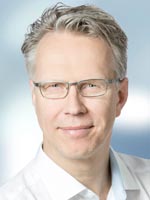
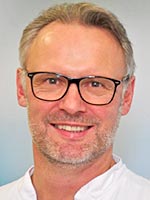
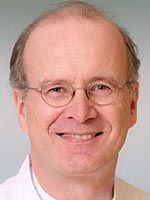

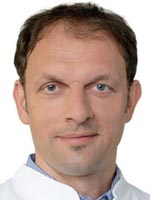
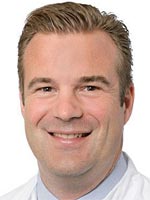
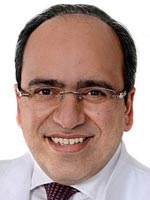


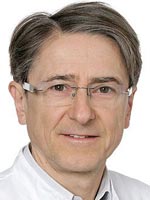

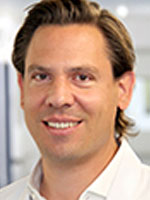






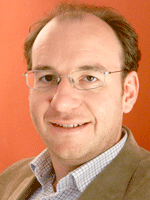
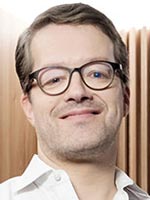
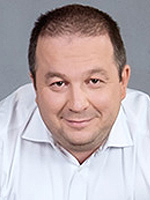
 Loading ...
Loading ...


